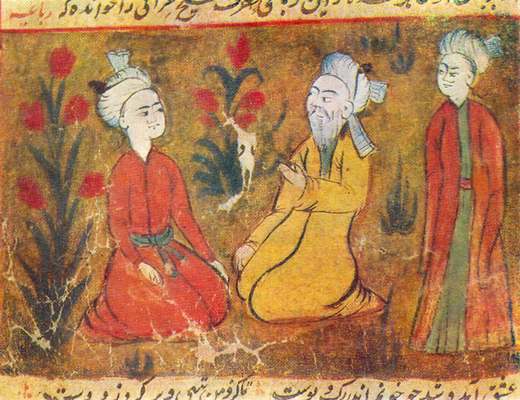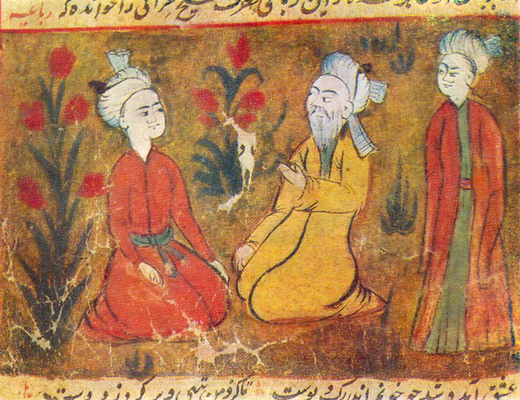By P.K.Balachandran/The Citizen
Colombo, January 17: Addressing the media in Tehran on January 15, India’s External Affairs Minister Dr.S.Jaishankar announced that the government of India has decided to include Farsi, Iran’s language, as one of the nine classical languages of India.
Without doubt this is a welcome step as Farsi or Persian, was the official language of India for centuries under Muslim rule. It shared that status with English during British rule till well into the 19th.Century. Of course, eventually, English supplanted it entirely.
But even in early 20 th.Century, Farsi was taught in schools in North, West and Central India .Traders used it in their accounts ledgers. Gandhi studied Farsi as a school boy in Porbandar, Gujarat.
However, as in the case of other languages which were included in the official list of classical Indian languages in the past, the inclusion of Farsi has a strong political intent.
On the one hand, its inclusion is part of Narendra Modi’s bid to woo Iran for geopolitical reasons. Iran is the gateway to resource-rich Central Asia for India. On the one other hand, its inclusion is meant to woo Indian Muslims in the run up to the May 2024 parliamentary elections.
In recent days, Modi. who had kept scrupulously away from any dealings with Muslims, even stopping the practice of holding Iftar parities during Ramzan, has been showing some interest in appealing to Muslim sentiments.
Modi sent his Minorities Affairs Minister Smriti Irani to Medina to get from the Saudi government a Haj quota of 150, 000 for Indian Muslims. He sent a chadar to the Ajmer Sharif Dargah to be placed on the grave of the Sufi saint Moinuddin Chishti . The government is even thinking of establishing a “Sufi circuit” linking places of Sufi interest scattered across India. There is already a “Buddhist circuit” for Buddhist visitors from across the world.
Clearly, Modi feels that the Hindu vote (even strengthened by the high profile inauguration of the Ram temple in Auyodhya) is not enough to ensure a third consecutive term for him. He feels the need to cast his net wider to get the votes of hitherto disregarded sections like the Muslims. The formation of the opposition alliance INDIA has ony added to his anxiety and sense of urgency.
With the inclusion of Farsi in the classical languages list, provision could be made to teach it in schools, and government funds could be made available for the study of, and research on, Farsi.
But the politics of its inclusion apart, it is time Farsi was recognized and its growth fostered India for the role it had played in the evolution of North and Central India’s culture, poetry and administration.
The language had gone where ever Muslims went as rulers. It was the language of administration even in Mysore in South India during the rule of Hyder Ali and Tipu Sultan.
Writing in Telegraph India in 2020, Prasun Chaudhuri said that Persian or Farsi was introduced in the Indian subcontinent by Muslim rulers from Central Asia in the 13th century.
“The language was not only the lingua franca of the classes — just like English in modern India — but also of creative literature and philosophy. In fact, the word Hindu, connoting people living in a geographical region beyond River Indus, is of Persian origin. So is the word Hindawi (later Hindi), used for the language spoken by the people in large parts this land.”
“”After having played a key role in communication and literature, the language was replaced by English in late 19th century. And now it faces ignominy or oblivion,” Chaudhuri noted with a tinge of sadness.
The Zoroastrians or Parsis of Persia, who had fled from an Islamizing Persia in the 7 th.Century, bought Farsi to Gujarat and some other parts of Western India.
Speaking about the strength of Persian or Farsi, Dr. Amit Dey, a Calcutta University historian, said that the Arabs who conquered Persia and tried to impose Arabic on the Persians only managed to impose the script, not Arabic.
Medieval classics such as Rumi’s Mathnawi, Firdausi’s Shah Nama, Omar Khaiyyam’s Rubaiyat, Hafez’s Divan and Saadi Shirazi’s Gulistan, were written in Farsi. Farsi also became the vehicle of Sufi mysticism, which defied all orthodox religious boundaries, Chaudhuri notes.
Even rulers of Turko-Afghan origin in medieval India, including those of the Delhi Sultanate and the Mughal Empire, accepted Farsi as the language of the court and diplomatic dealings.
Farsi flourished in the Indian subcontinent. It was the lingua franca of India before the advent of Hindustani or Urdu. It reached its pinnacle when Mughal emperor Akbar established it as the official or state language in 1582.
The earlier Mughals spoke Chagatai Turkic, and yet they chose Farsi to conduct the business of State because Farsi enjoyed a higher status.
Upper caste Hindus such as Brahmins, Kayasthas and Khatris who served the Muslim rulers as clerks, secretaries, bureaucrats and accountants learnt Farsi. In the process they also imbibed the culture and graces of the Persians.
Farsi ghazals, nazms and qawwalis (at Sufi shrines) were wholeheartedly accepted by the educated classes across faiths and ethnicities, Chaudhuri says.
Liberal-minded Muslim rulers like Akbar and Jahangir commissioned Persian translations of the Ramayana and the Mahabharata. Dara Shikoh went a step further when he took up the task of translating the Upanishads into Persian, aided by his veteran official Chander Bhan. Persian romances, such as Laila Majnu and Yusuf Zuleika, were translated into many Indian languages.
Of note is the fact that the Telugu speaking Hindu rulers of the Vijayanagar kingdom in the Deccan, adopted a highly Persianised culture. The Sikh gurus as well as the Maratha ruler Shivaji were well-versed in Persian.
Farsi was the language of the Sultans of Bengal long before the Mughal era, Chaudhuri says. In the 15th century, Sultan Ghiyasuddin Azam Shah of Bengal established contact with the legendary Persian poet, Hafiz. Persian classics were translated into Bengali.
Patronage from the Muslim sultans encouraged a section of the Bengali Hindu Bhadralok (gentry) to adopt the dress and social practices and literary tastes of the Persians. Raja Rammohun Roy wrote treatises in Persian and started the Persian newspaper Mirat-ul-Akhbar in 1823. The country’s first Persian printing press was also set up in Calcutta.
In the initial phase of the British administration, Persian was used as the language of the courts, official correspondence and record-keeping. Governor-General Warren Hastings, who well versed in the language, founded the Calcutta Madrasa where Persian, Arabic and Islamic Law were taught.
Persian judicial terms adalat, mujrim, munsif and peshkar are still used in courts across India to this day.
The sharp decline of Persian began when English was made the language of governance after the British Indian government adopted Lord Macaulay’s education policy in 1835.
Simultaneously, the emergence of vernacular languages, especially Urdu, brought about further marginalization of Farsi. .
As Persian was the language of the elite, Urdu emerged from the bottom to be the common language of soldiers of heterogeneous origin such as Mughals, Rajputs, Pathans, Turks, and Iranians in the Mughal military camp, and then became a language of the masses.
Urdu borrowed elements from Persian — idioms, styles, syntax, script — and mixed these with the local dialects, such as Poorvi and Brajbhasha.
Sufi saints like Nizamuddin Aulia also chose Urdu for their discourse. And with greater Islamization, Arabic supplanted Persian.
However, Chaudhuri notes that Farsi survives at the popular level even today and points to common Hindi words like zamin (land), maidan (ground), rang (colour), maza (fun), kalam (pen), chashma (spectacles), pyaz (onion), pulao (flavoured rice), jhadoo (broom), badmash (rogue) and many more that are of Persian origin.
Farsi is taught in universities like Calcutta, Delhi, Mumbai, Lucknow, Hyderabad, Guwahati and Patna. Institutes like the Indian Institute of Persian Studies, Delhi, and Calcutta’s Iran Society are trying to keep the language and its heritage alive.
The government’s decision to include Farsi in the list of classical language, irrespective of the motive, is welcome. It will be a shot in the arm for Farsi’s growth in India and also Indo-Iranian ties.
END
The post India reaches out to Iran by including Farsi as an Indian classical language appeared first on NewsIn.Asia.




